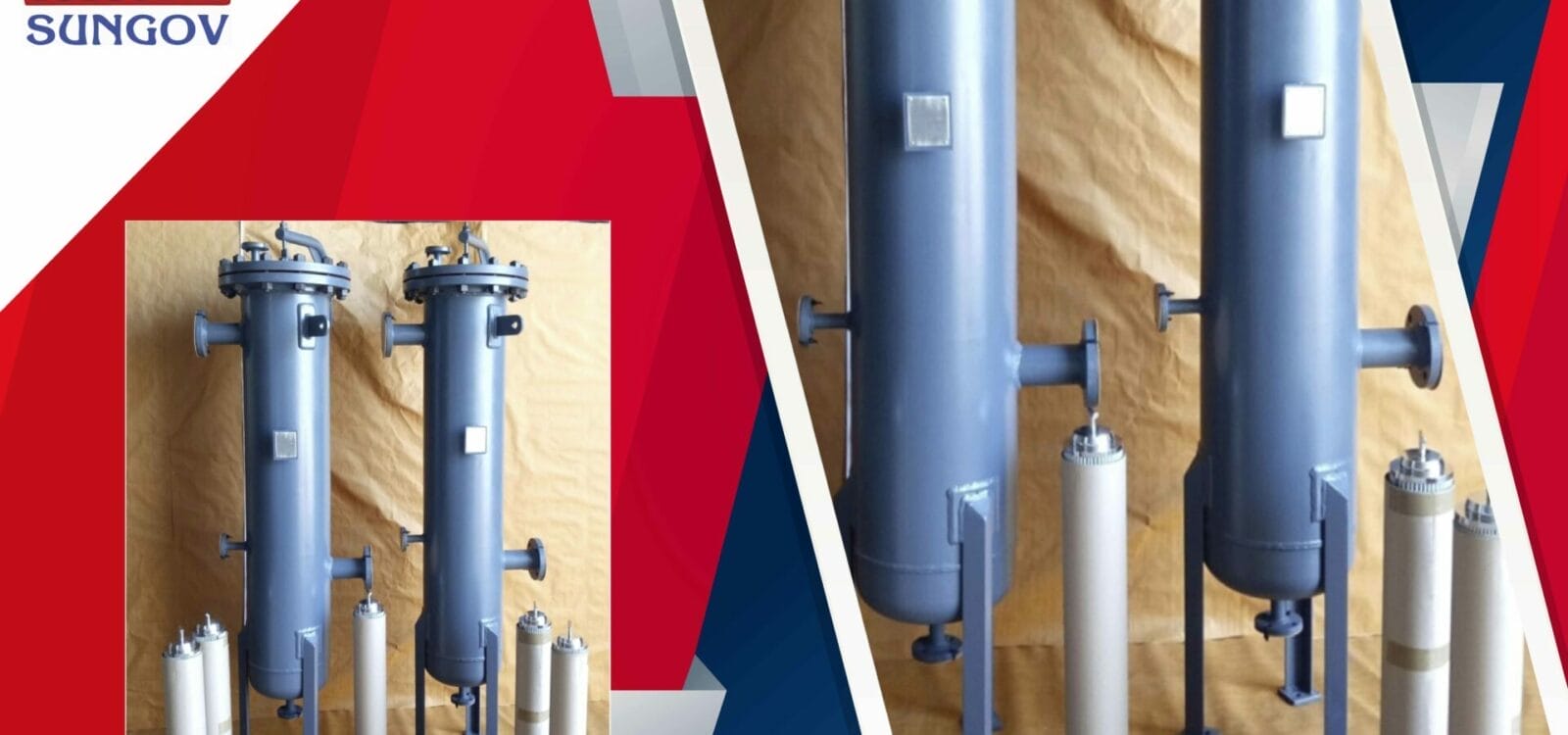When it comes to industrial filtration, precision is paramount. Among the array of tools at the disposal of engineers and operators, coalescers and separators stand out as stalwarts in the pursuit of purity. These mechanisms, comprising coalescer filters, fuel gas coalescers, and gas coalescing filter separators, serve as the frontline defenders against contaminants, ensuring the integrity of processes across a spectrum of industries. In this blog, we delve into the nuanced disparities between coalescers and separators, illuminating their distinct roles and applications in industrial settings. From refining operations to gas purification processes, understanding these filtration stalwarts is not just advisable—it’s essential for achieving peak performance and safeguarding the quality of industrial outputs.
What are the principles and mechanisms of coalescers and separators?
Coalescers:
Coalescers operate on the principle of coalescence, which involves merging small droplets or particles suspended in a fluid into larger droplets. This process facilitates the separation of contaminants from the fluid phase.
Some coalescers may employ specialized coatings or additives to reduce the surface tension of the fluid, promoting droplet coalescence. By lowering the surface tension, the barriers to droplet merging are diminished, enhancing the efficiency of the coalescence process.
Separators:
Separators rely on the principle of gravity separation to remove contaminants or phases of different densities from a fluid stream. This process involves allowing the heavier phase or particles to settle to the bottom of the separator while the lighter phase remains at the top.
In centrifugal separators, such as cyclonic separators or centrifuges, centrifugal force is utilized to separate particles or phases of varying densities. The rotational motion induces a centrifugal field, causing denser particles or phases to move outward and accumulate at the periphery, while lighter components remain closer to the center.
What are the key characteristics that differentiate coalescers and separators?
Mechanism of Action:
Coalescers primarily operate on the principle of coalescence, facilitating the merging of small droplets or particles into larger ones for easier separation from the fluid.
Separators, on the other hand, utilize various mechanisms such as gravity separation, centrifugal force, or phase boundary separation to separate phases or particles of different densities or properties from the fluid stream.
Purpose:
Coalescers are specifically designed to remove small liquid droplets or solid particles dispersed in a fluid by facilitating their combination into larger droplets for efficient removal. Separators, depending on their type, are used to separate phases of different densities.
Design and Construction:
Coalescers typically feature fibrous or porous media with high surface area to promote coalescence and capture contaminants efficiently.
Separators come in various designs tailored to specific applications, including gravity settlers, centrifugal separators, cyclonic separators, and more, each with unique configurations optimized for their intended separation process.
Fluid Characteristics:
Coalescers are primarily used in applications where the removal of small liquid droplets or particles from a fluid stream is necessary, such as in fuel purification, oil refining, or gas dehydration processes.
Separators are employed in a wide range of industries and applications to separate phases or components of different densities or properties, including oil-water separation, gas-liquid separation, and solid-liquid separation.
Efficiency and Performance:
Coalescers are highly efficient in removing small contaminants from a fluid stream, often achieving high levels of purity in the effluent.
Separators vary in efficiency depending on factors such as design, operating conditions, and the properties of the fluid being processed, with some achieving near-complete separation while others may require additional downstream treatment.
Applications in Industrial Settings: From Petrochemicals to Power Generation
Petrochemical Industry:
Coalescers are widely used in the petrochemical industry for refining processes, such as the purification of hydrocarbon streams, removal of water and contaminants from fuels, and separation of oil-water mixtures.
Separators play a crucial role in separating crude oil into its constituent components, such as separating water from crude oil, as well as in the separation of various fractions during distillation and refining processes.
Oil and Gas Production:
Coalescers are employed in upstream oil and gas production for the removal of water and contaminants from natural gas streams, ensuring compliance with pipeline specifications and preventing corrosion and equipment damage.
Separators are used in oil and gas production facilities to separate oil, gas, and water phases from well fluids, as well as in gas processing plants for the separation of natural gas liquids (NGLs) from the gas stream.
Chemical Manufacturing:
Coalescers find applications in chemical manufacturing processes for the purification of solvents, removal of impurities from process streams, and separation of liquid-liquid mixtures in reaction and separation units.
Separators are utilized in chemical plants for the separation of different phases in chemical reactions, as well as for the recovery and purification of valuable products from process streams.
Power Generation:
Coalescers are used in power generation facilities, particularly in gas turbine systems, for the removal of contaminants and moisture from fuel gas streams, ensuring efficient combustion and preventing equipment fouling.
Separators play a role in power plants for the separation of condensate from steam in steam turbines, removal of impurities from cooling water systems, and separation of lubricating oil from compressed air in turbine lubrication systems.
Water Treatment and Wastewater Management:
Coalescers are employed in water treatment processes for the removal of oil and grease from wastewater streams, as well as for the separation of suspended solids and contaminants from process water.
Separators are used in wastewater treatment plants for primary and secondary treatment processes, including the separation of settled solids from liquid effluents and the clarification of wastewater before discharge.
The distinction between coalescers and separators is not merely semantic but pivotal in understanding their respective roles and applications in industrial filtration. Coalescers, with their focus on coalescence and fine particle removal, excel in achieving high levels of fluid purity, crucial in industries where product quality and equipment integrity are paramount. Conversely, separators, leveraging various separation mechanisms, offer versatility in handling a wide range of fluid mixtures, contributing to efficient process operations across diverse industrial sectors. As industries continue to evolve and demand higher standards of efficiency and environmental stewardship, the continued innovation and integration of coalescers and separators will remain essential for meeting these challenges head-on, ensuring sustainable and reliable operations in the ever-changing landscape of industrial filtration.




